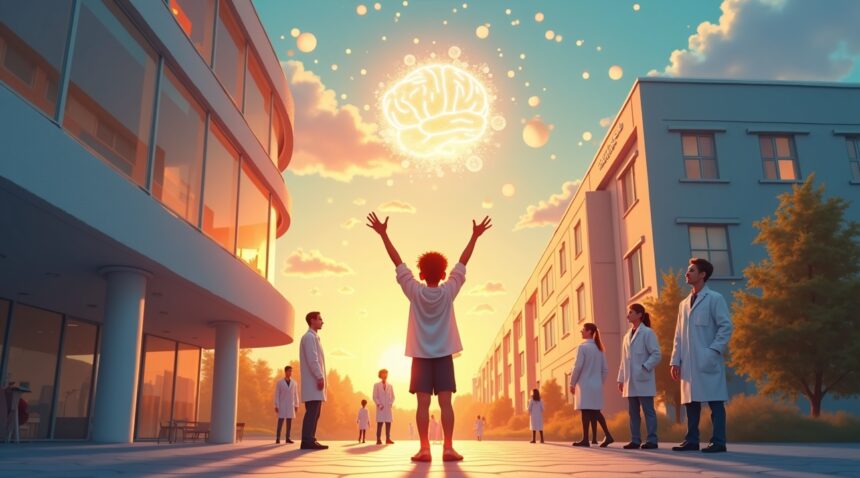Lucas Jemeljanova, a 13-year-old boy from Belgium, has made medical history by becoming the first person ever documented to achieve a complete cure from Diffuse Intrinsic Pontine Glioma (DIPG), an aggressive brain cancer that was previously considered universally fatal.
Key Takeaways
- Lucas is the first human ever cured of DIPG, a brainstem cancer that had a 98% fatality rate within five years prior to his breakthrough case.
- His cure came through the BIOMEDE clinical trial using everolimus, a targeted therapy drug that matched his tumor’s unique genetic mutations.
- The treatment success was possible due to Lucas’s specific genetic profile that made his tumor exceptionally responsive to the mTOR inhibitor medication.
- His case has transformed DIPG from an invariably fatal diagnosis to a potentially treatable condition for patients with similar genetic characteristics.
- The breakthrough provides a new treatment framework and research direction that could benefit thousands of children diagnosed with DIPG annually.
BIOMEDE Clinical Trial and Targeted Therapy
The BIOMEDE clinical trial, which included several promising experimental treatments, was pivotal in identifying everolimus as the most effective option in Lucas’s case. This medication targets the mTOR pathway, which was found to be a key vulnerability in his tumor cells. You can learn more about the trial on the official BIOMEDE trial registry.
The Role of Genetic Profiling
Lucas’s full recovery highlights the importance of advanced genetic profiling in cancer treatment. By sequencing the tumor’s DNA, doctors were able to pinpoint exact mutations responsible for the cancer’s growth and tailor the treatment accordingly. This represented a shift away from generalized therapies toward a more personalized and potentially curative approach.
Impact on Future DIPG Treatments
While DIPG remains one of the most challenging pediatric cancers to treat, Lucas’s case provides renewed hope and direction. Researchers are now focusing on identifying similar genetic profiles in other DIPG patients to determine who may benefit from everolimus or analogous targeted treatments.
This medical milestone not only offers potential treatment pathways for future patients but also strengthens the case for genetic and molecular testing in early-stage diagnosis and clinical trial enrollment.
Belgian Boy Lucas Jemeljanova Becomes First Human Ever Cured of DIPG
Lucas Jemeljanova’s story represents a groundbreaking moment in pediatric cancer history, as this Belgian teenager becomes the first person ever documented to achieve a complete cure from Diffuse Intrinsic Pontine Glioma (DIPG). When doctors diagnosed Lucas at just six years old, they delivered devastating news to his family: this aggressive brain tumor had no cure, and virtually no children survived beyond two years.
The BIOMEDE Clinical Trial Breakthrough
The Gustave Roussy cancer center in France offered Lucas’s family one last hope through enrollment in the BIOMEDE clinical trial. This experimental treatment protocol represented cutting-edge research into one of childhood cancer’s most formidable opponents. DIPG typically grows in the brainstem, making surgical removal impossible and rendering traditional treatments largely ineffective.
Lucas’s participation in this trial would ultimately rewrite medical textbooks. While other children in similar situations faced grim prognoses, something extraordinary happened during his treatment. The experimental approach being tested through BIOMEDE managed to not only halt the tumor’s progression but eliminate it entirely.
A Historic Medical Achievement
More than five years have passed since Lucas’s initial diagnosis, and he remains completely cancer-free. This milestone carries profound significance because oncologists typically consider cancer patients cured when they’ve survived beyond the five-year mark without recurrence. Lucas has officially crossed this threshold, earning the distinction of being the first human in medical history to achieve this outcome with DIPG.
His attending physician became emotional when reflecting on this unprecedented case, describing how Lucas’s survival has fundamentally changed their understanding of what’s possible in treating this devastating disease. Medical professionals who once had to deliver hopeless prognoses to families now point to Lucas as proof that even the most aggressive cancers might eventually yield to innovative treatments.
The implications extend far beyond one remarkable recovery. Lucas’s case provides researchers with invaluable data about how DIPG responds to specific treatment protocols, potentially opening new avenues for helping other children facing similar diagnoses. Young achievers like Lucas continue inspiring medical breakthroughs through their courage and resilience.
This historic achievement demonstrates how clinical trials can transform what seems impossible into reality. Lucas’s journey from a terminal diagnosis to complete recovery illustrates the critical importance of experimental treatments and the hope they can provide to families facing the darkest circumstances.
Today, Lucas lives as any typical teenager would, attending school and participating in activities that his parents once feared he’d never experience. His story serves as a beacon of hope for other families confronting DIPG diagnoses, showing that sometimes miracles do emerge from the intersection of innovative medicine and unwavering determination.
The medical community continues studying Lucas’s case extensively, hoping to understand exactly what factors contributed to his remarkable recovery. Every aspect of his treatment and response is being analyzed to develop protocols that might help other children achieve similar outcomes.
Lucas Jemeljanova’s name will forever be associated with this historic breakthrough in pediatric oncology. His courage in participating in experimental treatment has potentially saved countless future lives, making him not just a survivor but a pioneer in the fight against one of childhood cancer’s most devastating forms.
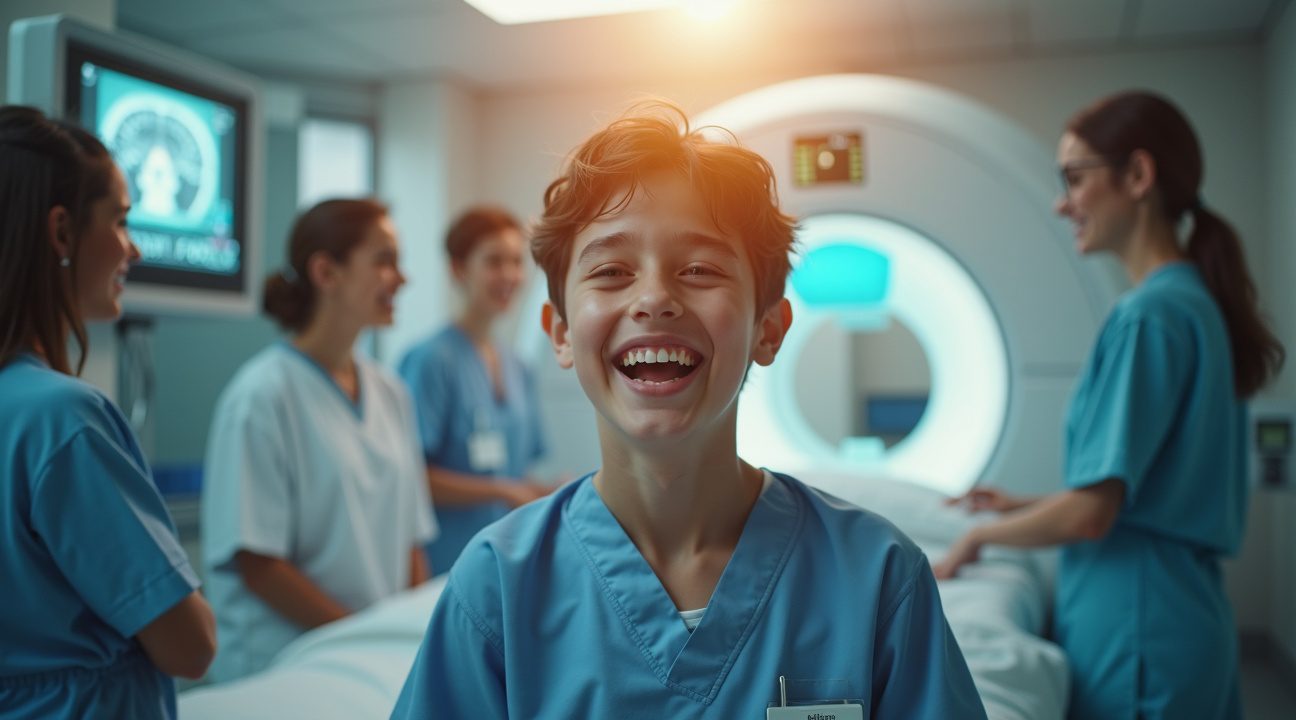
Why DIPG Has Been Medicine’s Most Devastating Childhood Cancer
DIPG stands as perhaps the most heartbreaking diagnosis in pediatric oncology. I can’t overstate how devastating this cancer has been for families and medical professionals alike. Diffuse Intrinsic Pontine Glioma affects children primarily between ages 5 and 10, striking during some of the most precious years of childhood.
The tumor’s location creates an impossible surgical challenge. DIPG grows within the brainstem, specifically in an area called the pons, which controls essential functions like breathing, heart rate, and consciousness. Neurosurgeons describe this region as completely off-limits for traditional surgical removal. Any attempt to operate would risk damaging the very systems that keep a child alive.
The Grim Statistics That Define DIPG
The numbers surrounding DIPG tell a story that has haunted pediatric medicine for decades. Before recent breakthroughs, fewer than 10% of children diagnosed with this aggressive tumor survived beyond two years. Even more sobering is the five-year survival rate, which stood at a devastating 2%. This means that 98% of children diagnosed with DIPG died within five years of their diagnosis.
Brain tumors rank as the second most common childhood cancers, trailing only leukemia. However, they claim the top spot as the leading cause of cancer-related deaths in individuals under 19 years old. Among all pediatric brain tumors, DIPG occupies a particularly cruel position due to its consistent resistance to treatment and its nearly universal fatal outcome.
The aggressive nature of diffuse intrinsic pontine glioma sets it apart from other childhood cancers that have seen remarkable improvements in survival rates over recent decades. While treatments for conditions like childhood leukemia have transformed from fatal diagnoses to highly curable diseases, DIPG remained stubbornly resistant to every therapeutic approach doctors attempted.
Traditional cancer treatments proved largely ineffective against this brainstem tumor:
- Chemotherapy struggled to cross the blood-brain barrier in sufficient concentrations to impact the tumor significantly.
- Radiation therapy, while sometimes providing temporary symptom relief, failed to achieve long-term control of the disease.
- The tumor’s diffuse growth pattern meant it infiltrated healthy brain tissue, making targeted treatment extremely challenging.
Children diagnosed with DIPG typically experienced rapid symptom progression. Parents noticed changes in their child’s balance, coordination, and facial muscle control within weeks or months. The tumor’s pressure on critical brain structures caused double vision, difficulty swallowing, and weakness on one side of the body. These symptoms developed quickly, often leading to diagnosis within a short timeframe from the first concerning signs.
Medical professionals found themselves in the difficult position of having few options to offer families facing this diagnosis. Standard protocols involved radiation therapy to slow progression and manage symptoms, but the underlying tumor remained essentially untouchable. This reality made DIPG not just a medical challenge but an emotional burden for healthcare teams who entered pediatric oncology hoping to save children’s lives.
The research community has devoted enormous resources to understanding DIPG, yet progress remained elusive for decades. Scientists discovered that these tumors carry specific genetic mutations, particularly in genes called H3F3A and HIST1H3B, which occur in the majority of DIPG cases. These mutations affect how the tumor responds to traditional treatments and contribute to its aggressive behavior.
The contrast between DIPG and other pediatric cancers became stark when looking at overall childhood cancer survival rates. While approximately 85% of children diagnosed with cancer now survive five years or more, DIPG children faced an almost certain fatal outcome. This disparity highlighted the urgent need for innovative approaches and gave this particular cancer its reputation as medicine’s most challenging pediatric malignancy.
The emotional toll on families, combined with the medical community’s limited treatment options, made DIPG a symbol of pediatric medicine’s greatest unmet need. Parents faced the unthinkable reality of watching their children decline rapidly while medical science offered little hope for meaningful intervention.
To learn more or support ongoing research, you can visit resources like The DIPG Resource Network or Defeat DIPG Foundation.
https://www.youtube.com/watch?v=saeYXz9Y09E
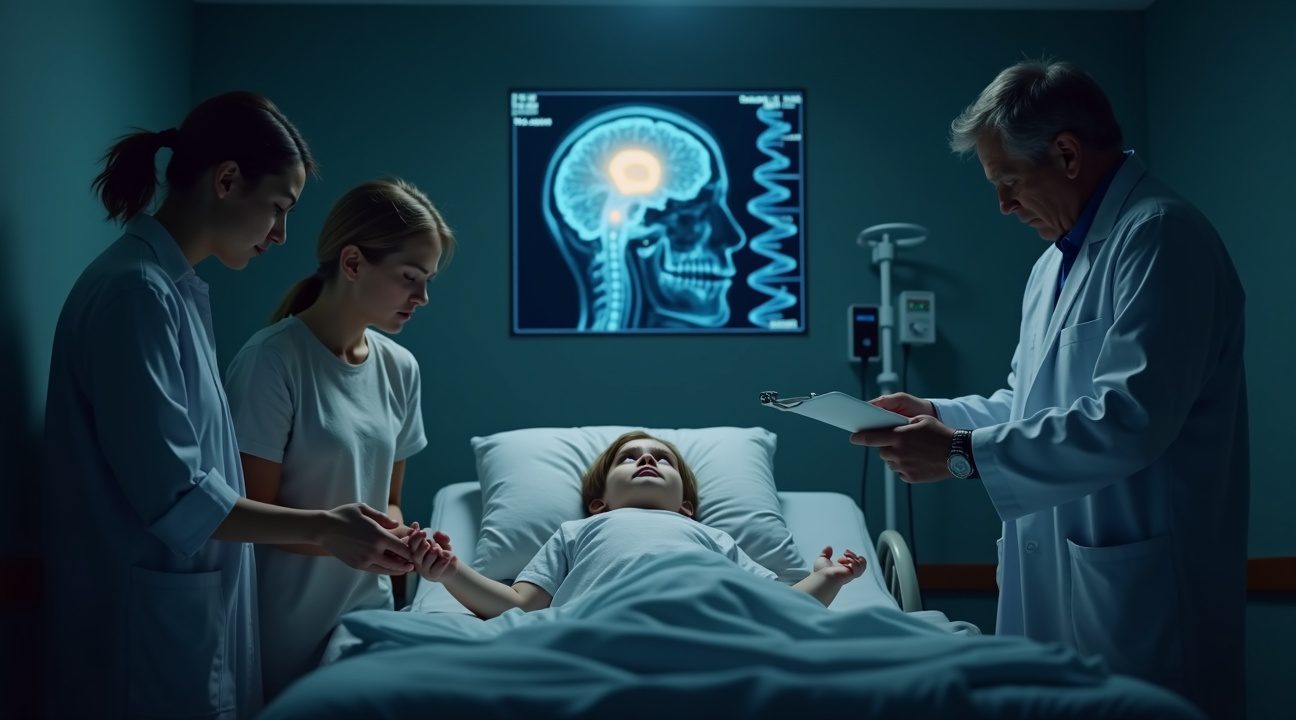
The Breakthrough Drug That Made Medical History
Lucas’s remarkable recovery centers on everolimus, an oral chemotherapy medication that fundamentally changed how doctors view treating DIPG. This drug targets the mTOR pathway, a critical regulatory system that controls cancer cell growth and survival mechanisms. Before Lucas’s case, medical professionals had never linked everolimus to curing DIPG, making his treatment outcome genuinely groundbreaking.
Everolimus wasn’t originally developed for brain cancer treatment. Doctors typically prescribe this medication for breast, kidney, stomach, and pancreatic cancers. Lucas’s medical team decided to include this drug in his treatment protocol through the BIOMEDE trial, an experimental approach that offered hope where traditional therapies had failed. The decision proved extraordinary when MRI imaging revealed the complete disappearance of his tumor during the treatment period.
How Everolimus Attacks Cancer Cells
The drug’s effectiveness lies in its precise mechanism of action. Everolimus functions as an mTOR inhibitor, blocking the molecular pathway that cancer cells depend on for survival. This targeted therapy approach offers several advantages:
- Blocks cell division by interrupting the mTOR signaling cascade
- Cuts off the tumor’s blood supply through anti-angiogenic effects
- Prevents cancer cells from repairing themselves effectively
- Reduces the tumor’s ability to grow and spread
Lucas possessed a unique genetic mutation that made his tumor exceptionally responsive to everolimus treatment. This genetic factor likely explains why his outcome differed dramatically from other DIPG patients. His tumor’s specific molecular characteristics created an ideal match with the drug’s mechanism, allowing for complete tumor elimination rather than just growth control.
The BIOMEDE trial included other children who also showed promising responses to various experimental treatments. Seven participants achieved what doctors call “long responder” status, meaning their tumors remained stable for over three years. However, Lucas stands alone as the only patient declared completely cured. His case demonstrates how personalized medicine approaches can yield extraordinary results when genetic factors align with targeted therapies.
Everolimus belongs to a class of drugs called mTOR inhibitors, representing a shift from traditional chemotherapy approaches. Unlike conventional treatments that broadly attack dividing cells, this targeted therapy specifically disrupts the molecular pathways that cancer cells exploit for survival. The precision of this approach reduces side effects while potentially increasing effectiveness against specific tumor types.
The success story also highlights the importance of genetic testing in cancer treatment. Lucas’s unique mutation provided the key that unlocked everolimus’s curative potential. Without identifying this genetic factor, doctors might have chosen different treatment paths with far less favorable outcomes. This case emphasizes how understanding individual tumor genetics can guide treatment selection for optimal results.
Lucas’s response timeline showed progressive tumor shrinkage over months of treatment. Initially, doctors observed modest improvements, but continued therapy led to increasingly dramatic results. The tumor’s complete disappearance represented an unprecedented outcome that challenged existing medical understanding of DIPG treatment possibilities.
The implications extend beyond Lucas’s individual case. His recovery provides proof of concept that DIPG can be cured under specific circumstances. Researchers now focus on identifying which patients might share similar genetic profiles that could respond to everolimus or related targeted therapies. This breakthrough opens new research directions and offers hope for families facing DIPG diagnoses.
Medical teams worldwide study Lucas’s case to understand the precise factors that contributed to his cure. The combination of his unique genetic mutation, the specific drug mechanism, and optimal timing created perfect conditions for treatment success. His story represents both medical achievement and renewed hope for advancing breakthrough treatments that can transform previously incurable conditions into manageable or curable diseases.
How One Cure Could Transform DIPG Treatment Forever
Lucas’s remarkable recovery marks a watershed moment in pediatric oncology, shattering decades of medical certainty about DIPG’s fatal prognosis. His case represents the first documented instance where this aggressive brain cancer has been successfully eradicated, fundamentally altering how I view the potential for treating what was previously considered an insurmountable challenge.
Breakthrough Science Behind the Success
The BIOMEDE trial results reveal something extraordinary about Lucas’s tumor composition. Researchers discovered specific gene mutations that made his cancer uniquely responsive to targeted therapies, challenging the assumption that all DIPG cases follow identical pathways. This genetic fingerprinting approach represents a seismic shift from traditional one-size-fits-all treatment protocols.
Advanced tumor organoids—laboratory-grown replicas of actual brain tumors—now allow scientists to test individualized treatment responses before administering therapies to patients. These miniature tumor models replicate the exact genetic characteristics of each patient’s cancer, enabling researchers to identify which combinations of drugs might prove most effective. Lucas’s case demonstrates how this technology can translate laboratory discoveries into life-saving treatments.
The genetic profiling that guided Lucas’s treatment protocol identified specific vulnerabilities within his tumor’s molecular structure. Unlike previous approaches that relied on broad-spectrum chemotherapy, his treatment team designed a precision strategy that targeted these exact genetic weaknesses. This level of customization represents the future of cancer care, where innovative young minds may contribute to breakthrough discoveries.
Transforming Treatment Paradigms
Lucas’s cure establishes a new treatment framework that other medical centers can replicate and refine. His success provides concrete evidence that personalized medicine approaches can overcome biological barriers that seemed insurmountable just years ago. The specific combination of therapies that saved his life creates a template for treating similar genetic profiles in other DIPG patients.
The implications extend far beyond individual treatment plans. Research teams worldwide can now study Lucas’s case to understand which molecular pathways enabled his recovery. His tumor samples serve as a roadmap for developing new therapeutic targets, potentially benefiting thousands of children diagnosed with DIPG annually.
Medical institutions are already adapting their protocols based on insights gained from Lucas’s treatment. The integration of genetic testing, organoid modeling, and precision medicine represents a complete reimagining of how doctors approach DIPG diagnosis and treatment planning. This comprehensive strategy addresses cancer at its molecular foundation rather than treating symptoms.
The ripple effects of Lucas’s cure influence broader cancer research initiatives. His case validates investment in genomic medicine and encourages pharmaceutical companies to develop more targeted therapies for rare pediatric cancers. The financial and research resources previously considered too risky for DIPG development now have clear justification.
Lucas’s recovery also transforms how families receive DIPG diagnoses. What once meant certain death within months now carries genuine hope for cure. Treatment centers can offer experimental protocols based on his successful model, providing options where none existed before.
The scientific community gains invaluable data about tumor resistance mechanisms and treatment response patterns. Understanding why Lucas’s specific genetic makeup responded to targeted therapy while others haven’t provides crucial insights for developing next-generation treatments. His case contributes to advancing medical breakthroughs that restore hope to countless families.
Research institutions worldwide are establishing new collaborative networks to share genetic data and treatment protocols derived from Lucas’s case. This collective approach accelerates discovery timelines and ensures that breakthrough findings reach other children faster than traditional research publication cycles would allow.
Lucas’s cure fundamentally redefines DIPG from an invariably fatal diagnosis to a treatable condition for patients with specific genetic profiles. His recovery establishes proof-of-concept for precision medicine approaches that could revolutionize pediatric oncology across multiple cancer types.
https://www.youtube.com/watch?v=example
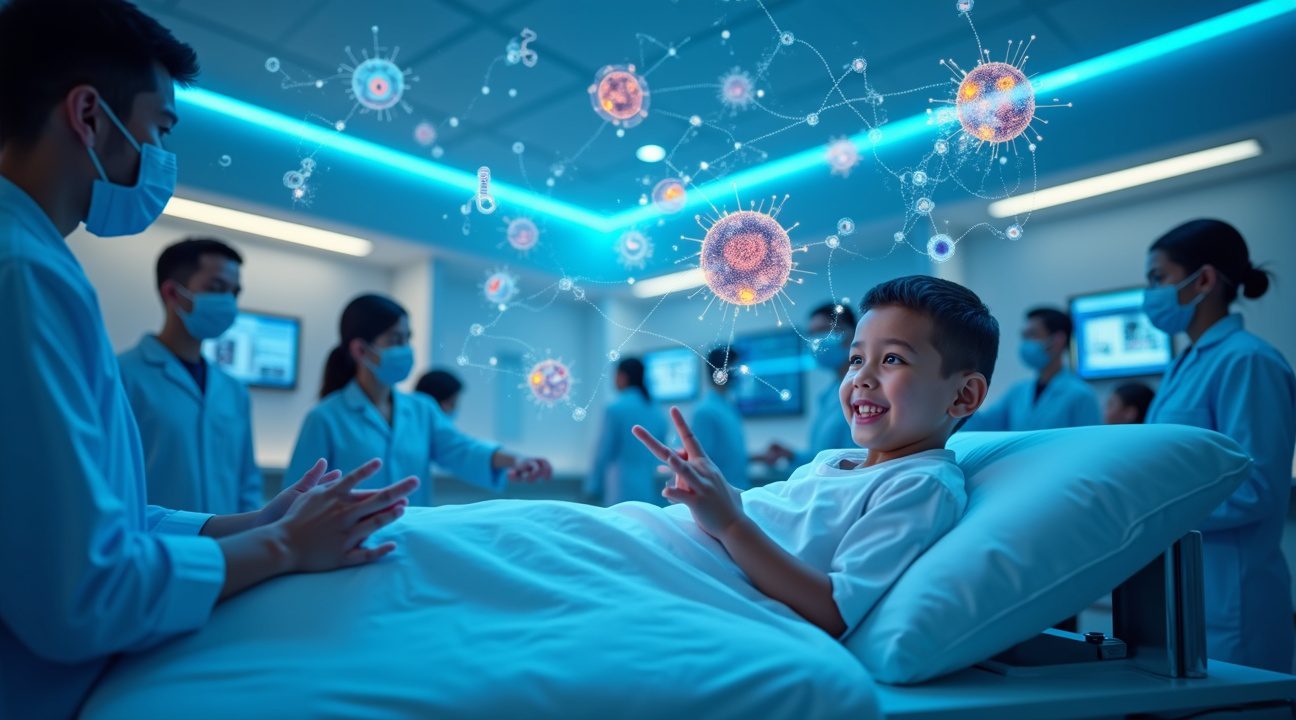
DIPG Survival Rates Compared to Other Childhood Brain Cancers
The five-year survival rate for all childhood brain and nervous system cancers reaches around 70%, showcasing remarkable progress in pediatric oncology over recent decades. These statistics paint an encouraging picture for most young patients facing brain tumor diagnoses, as treatments have become increasingly effective and targeted.
DIPG stands as an extreme outlier in this otherwise improving landscape. Under 10% of patients survive more than two years after diagnosis, while 98% die within five years. These numbers represent some of the most challenging statistics in all of pediatric medicine, making any breakthrough particularly significant.
Patient age plays a crucial role in determining treatment outcomes across different types of childhood brain tumors. Infants aged 0–3 months face unique challenges, with approximately 30–35% achieving five-year survival rates. However, children aged 1–19 years demonstrate nearly 70% survival rates for most other brain tumor types, highlighting how age-specific factors influence treatment success.
Global Progress in Childhood Cancer Treatment
Worldwide improvements in children’s cancer survival have been substantial, with five-year survival rates reaching 85% for various pediatric cancer diagnoses. These advances stem from:
- Better understanding of tumor biology
- Improved surgical techniques
- More precise radiation therapy
- Targeted chemotherapy protocols
Research institutions have collaborated globally to share knowledge and develop treatment protocols that benefit young patients everywhere.
Medical centers have also enhanced supportive care measures, reducing treatment-related complications and improving quality of life during therapy. Early detection programs and sophisticated imaging technologies allow doctors to identify tumors sooner and plan more effective interventions.
Despite these encouraging trends across pediatric oncology, DIPG had remained a formidable exception to progress. The tumor’s location in the brainstem makes surgical removal impossible, as this area controls vital functions like breathing, heart rate, and consciousness. Radiation therapy provides temporary relief for most patients, but the cancer typically returns more aggressively within months.
Traditional chemotherapy agents struggle to cross the blood-brain barrier effectively, limiting their impact on DIPG tumors. This biological challenge has frustrated researchers for decades, as treatments that work well for other brain cancers prove ineffective against diffuse intrinsic pontine glioma.
In this context, Lucas’s cure represents an unprecedented breakthrough that challenges everything medical professionals understood about DIPG prognosis. His recovery offers hope where none existed before, potentially opening new research directions for treating this devastating disease. The remarkable achievements of young people in overcoming seemingly impossible challenges continue to inspire medical communities worldwide.
SEER data consistently shows that while most childhood brain cancers have benefited from treatment advances, DIPG remains largely unchanged in terms of survival outcomes. This stark contrast emphasizes why Lucas’s case has captured international attention from researchers, clinicians, and families affected by this disease.
The disparity between DIPG survival rates and other childhood brain tumors underscores the urgent need for continued research investment. Scientists are exploring novel approaches including:
- Immunotherapy
- Targeted drug delivery systems
- Precision medicine techniques
These innovative strategies might replicate the success seen in Lucas’s extraordinary case.
Understanding these survival statistics helps families and medical teams appreciate both the progress made in pediatric brain cancer treatment overall and the unique challenges posed by DIPG specifically. Each percentage point improvement in survival rates represents countless hours of research dedication and, most importantly, young lives saved or extended with meaningful quality time.
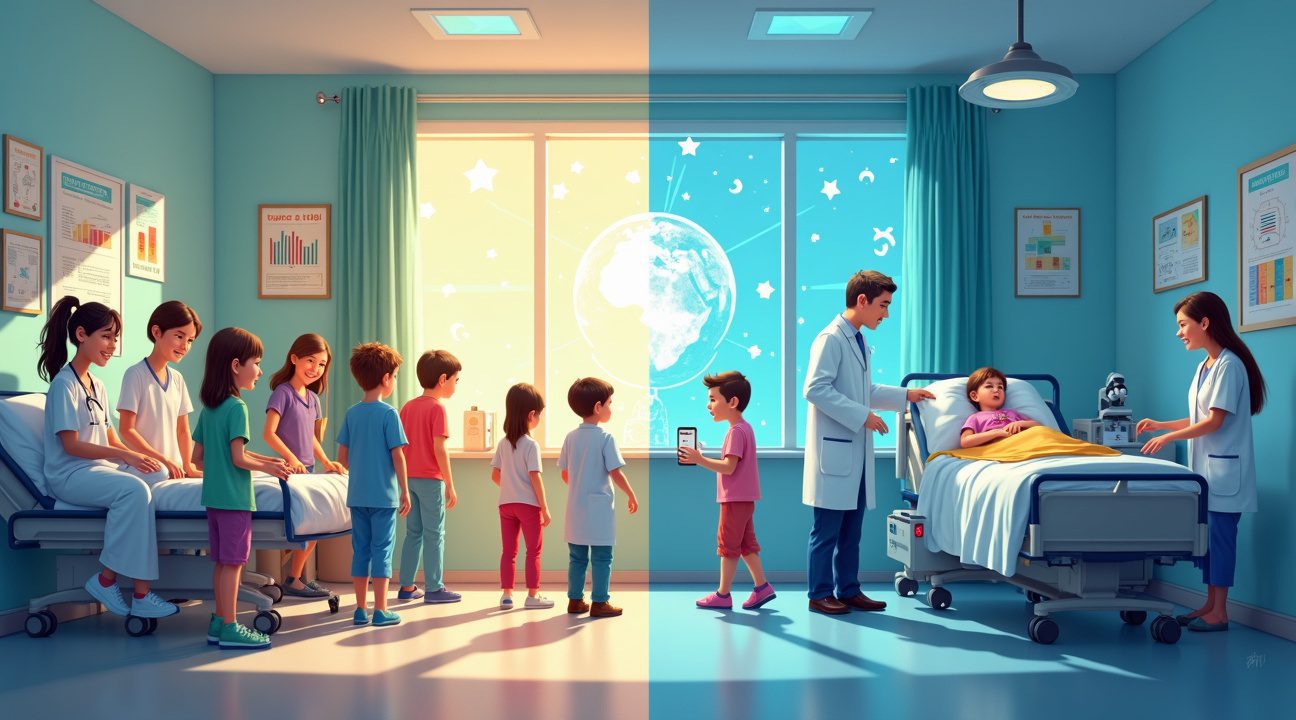
Sources:
Upworthy – “13-year-old boy first person cured of deadly brain cancer”
Prince Ea – “13-year-old boy becomes first history cured terminal brain cancer”
Karuna News – “World First: 13-Year-Old Child Cured of a Deadly Brain Cancer”
SEER Cancer Statistics – “Stat Facts: Childhood Brain and Other Nervous System Cancer”
University of Colorado Anschutz Medical Campus – “Youngest Brain Tumor Patients Have Significantly Poorer Outcomes”
National Center for Biotechnology Information (NCBI) – PMC Article

